Articles Menu
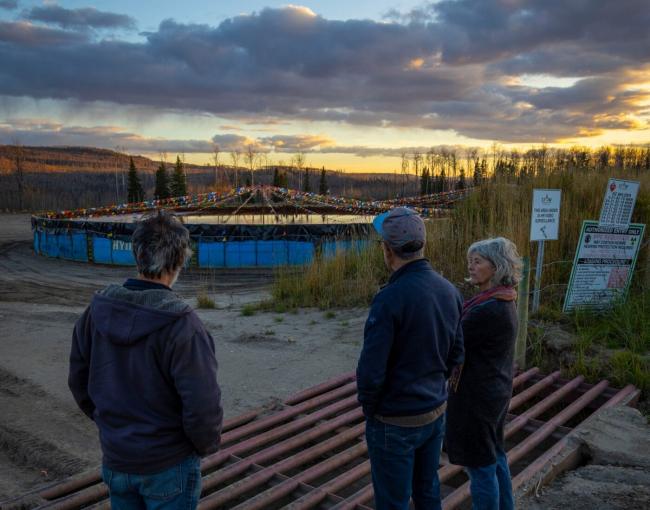
Nov. 28, 2020
On a late afternoon in early October, Anja Hutgens and Hans Kirschbaum walk out of their home at the edge of an expansive field dotted with black Angus cows in B.C.’s south Peace River region. They herd their two dogs into the back of their pickup truck and drive up the long, steep dirt driveway that takes them into a world they used to love but now barely recognize.
After the ascent from the bucolic valley bottom, Kirschbaum guides the truck onto an industrial gravel road. Soon the couple passes by a natural gas processing plant, where a spire of flame shoots out of a tall flare stack. Beyond that lies a cavernous industrial water pit, filled with water from the nearby Pine River. And beyond that, a deforested patch of land dominated by two giant steel containers painted a Mediterranean blue and filled to near capacity with a menacing brew of rust-coloured wastewater. Strips of colourful plastic flagging hang above the containers, known as C-rings, to warn ducks and geese to stay out. Birds would quickly die in the stuff. Cows would perish drinking it.
At the entrance to the clearing, the natural gas company operating in the immediate region, Crew Energy, has posted a sign emblazoned with the internationally recognized radiation warning symbol. Beside the symbol is another sign saying that “NORM” may be in the neighbourhood.
The unassuming acronym, Hutgens matter-of-factly explains, stands for naturally occurring radioactive materials. But there is nothing natural about radioactive elements including radium, thallium and selenium suddenly appearing on the threshold of Hutgens and Kirschbaum’s home and ranch. Something brought those potentially dangerous contaminants to their doorstep, and that something is the natural gas industry.
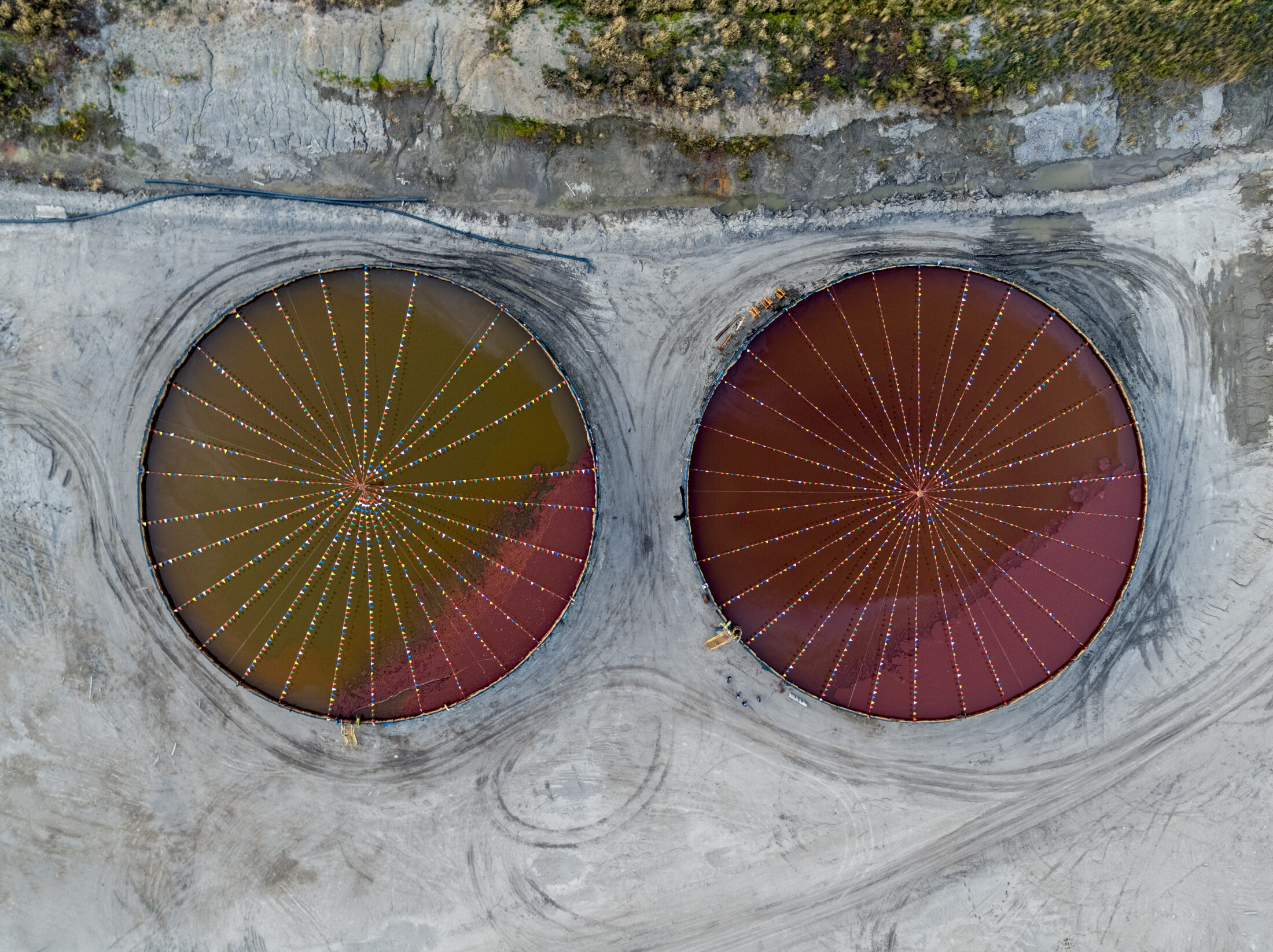
Contaminated fracking wastewater fills two C-rings at the top of the hill above Penalty Ranch. Photo: Jayce Hawkins / The Narwhal
Hutgens and Kirschbaum have been here before and know what to look for. They walk up to a spongy piece of industrial cloth lying at the base of one of the C-rings. The cloth is there to absorb any wastewater that may spill as trucks offload it into the tanks.
Hutgens pulls a small device about the size of a cellphone out of her coat pocket and turns it on. It’s a Geiger counter, which detects radiation. She lowers it until it almost touches the cloth. Instantly, clicks begin to emanate from the counter as radioactive particles interact with gas inside the counter’s chamber.
It doesn’t take long for the counter to record 100 clicks per minute, at which point an alarm goes off. But the clicks just keep coming, before topping out at 170 counts per minute, meaning the radiation level here is much higher than the normal, naturally occurring background radiation that surrounds us at low levels from sources such as the sun.
Hutgens and Kirschbaum have repeatedly asked Crew Energy and the BC Oil and Gas Commission to test the water inside the C-rings as well as the accumulated muck at the bottom of them, but they say the company has refused, leading the couple to take matters into their own hands so they know what they’re up against.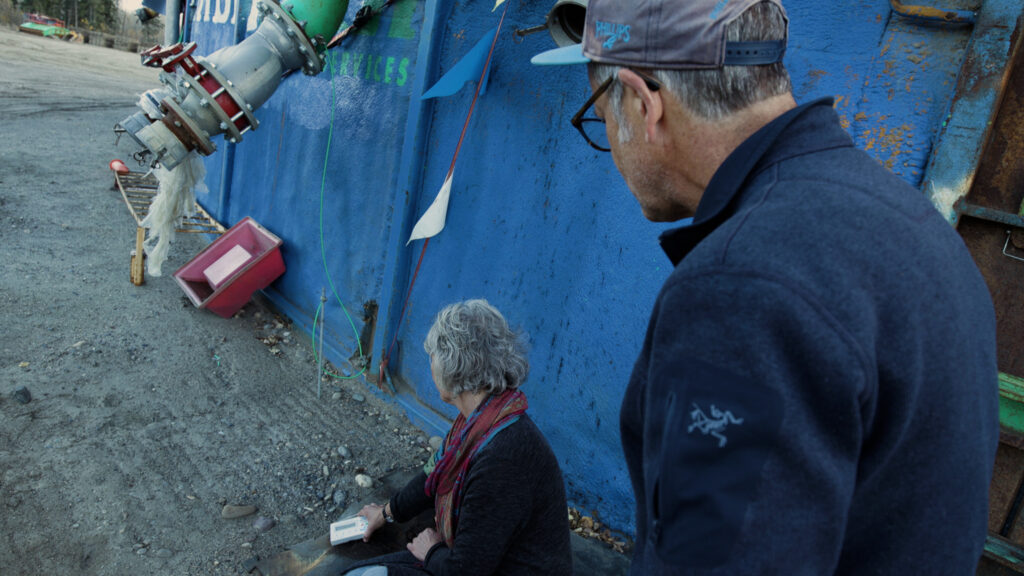
Anja Hutgens holds a Geiger counter, which detects radiation, above a piece of cloth placed along a C-ring to collect spilled wastewater. Soon, an alarm starts to sound. Photo: Matt Miles / The Narwhal
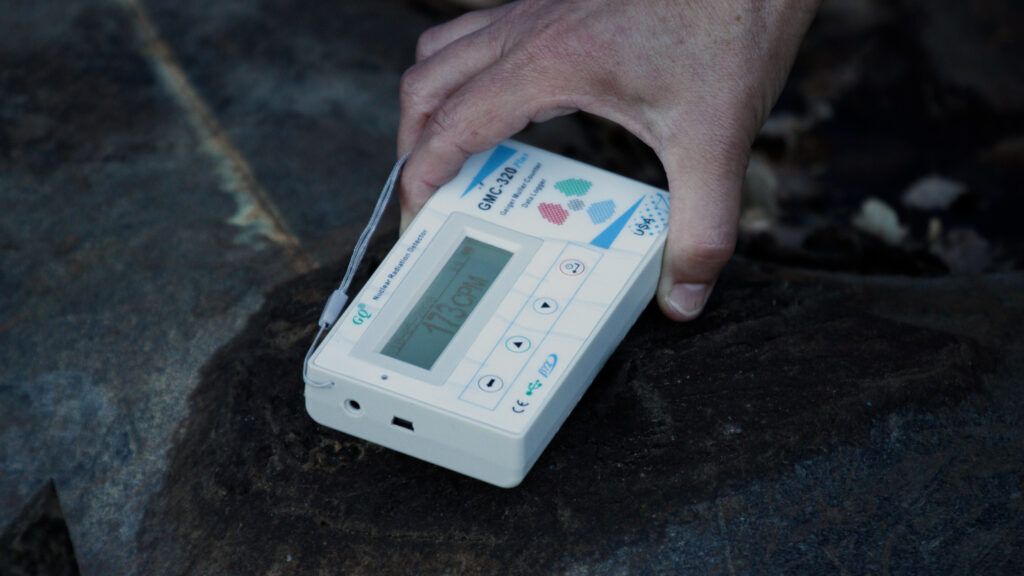
Anja Hutgens and Hans Kirschbaum rely on a Geiger counter to get an idea of what’s in the wastewater in the C-rings by their property because they say the company that owns them refuses to reveal any information. Photo: Matt Miles / The Narwhal
After turning the Geiger counter off, Hutgens and Kirschbaum return to the pickup truck, which is parked just in front of a metal grid known as a cattle guard that’s intended to keep their cows from wandering onto the site.
“We’re not against the gas industry,” Hutgens says. “I mean, we all need those resources. We all depend on it as well. But there need to be boundaries. And first of all, we must protect our water resources, which is the most important thing of all.”
Water is everything to the Peace River region’s ranchers and farmers. But it’s also everything to the region’s natural gas industry. And as that industry rapidly expands its water-intensive fracking operations, people like Hutgens and Kirschbaum fear their critical water sources could dry up or become poisoned.
During fracking, tremendous volumes of water, sand and chemicals are pumped at extreme pressure into rock formations deep below ground. The earthquake-inducing force at which all that water is pumped busts open or fractures the rock, allowing trapped oil and gas to be released. But much of the pumped water then flows back to the surface, contaminated with whatever it has come into contact with underground. Typically, it is so salty that it would be lethal to all aquatic life if it was piped into a stream. Other contaminants typically include trace metals, chemicals and hydrocarbons. And yes, sometimes, radioactive materials. 
Anja Hutgens isn’t against the natural gas industry, but she wants it to respect water resources.
Photo: Matt Miles / The Narwhal
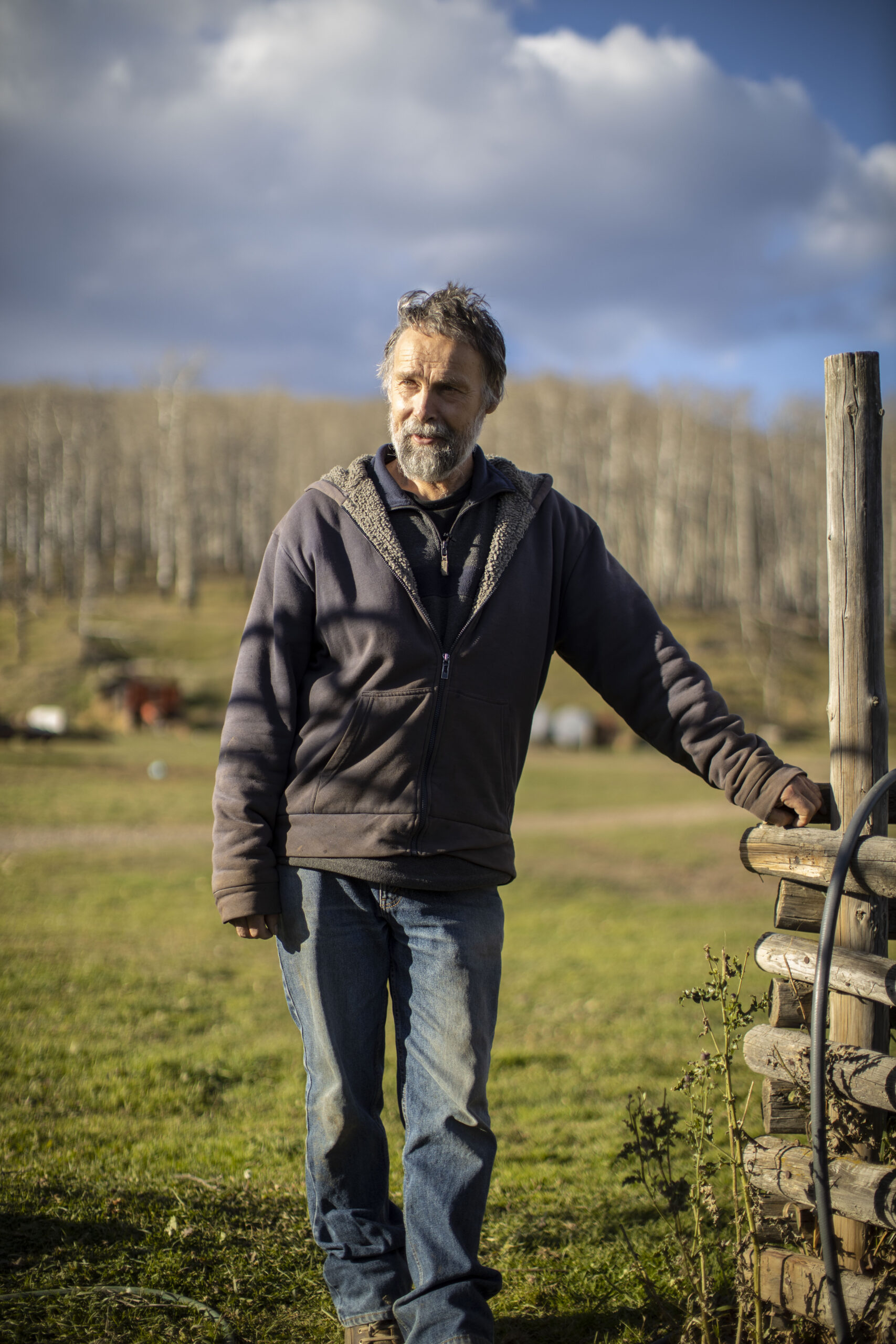
Hans Kirschbaum’s father bought Penalty Ranch 40 years ago, back when there was much less industrial activity in the Peace River region. Photo: Matt Miles / The Narwhal
The amount of wastewater being generated by the fracking industry is dizzying. In just the immediate vicinity, there are as many as 21 C-rings belonging to Crew Energy, each capable of holding 5,000 cubic metres of wastewater — enough to fill two Olympic-sized swimming pools. If just a fraction of that water spilled or seeped into the ground at the wrong place, the consequences could be devastating for their ranch.
And Crew Energy is just one of many companies operating in the region. Other companies — including Ovintiv (formerly Encana), Shell and Canadian Natural Resources — have even bigger operations, producing greater volumes of wastewater.
For 40 years, a natural spring has been the primary source of drinking water at Penalty Ranch, which was purchased by Kirschbaum’s father 40 years ago after he journeyed to northeast B.C. from his home in Bavaria, Germany. The spring is also an essential water source for the couple’s 300 head of thirsty cattle.
Hutgens and Kirschbaum’s greatest fear is that the industrial activity at the top of the hill above their ranch will lead to the contamination of their water.
In July, Crew Energy received permits from the BC Oil and Gas Commission to dramatically increase the amount of wastewater stored near the ranch. The company’s plan involves building two massive wastewater pits and retiring all but eight of its C-rings.
Each pit would require excavating holes deep into the earth. The pits would then be lined with three layers of thick industrial plastic and filled with up to 60,000 cubic metres of wastewater each. If the pits proceed, it will mean that eventually Crew Energy can store enough wastewater — potentially radioactive — to fill 64 Olympic-sized swimming pools close to the ranch and Worth Marsh, a body of water that may be the spring’s water source.
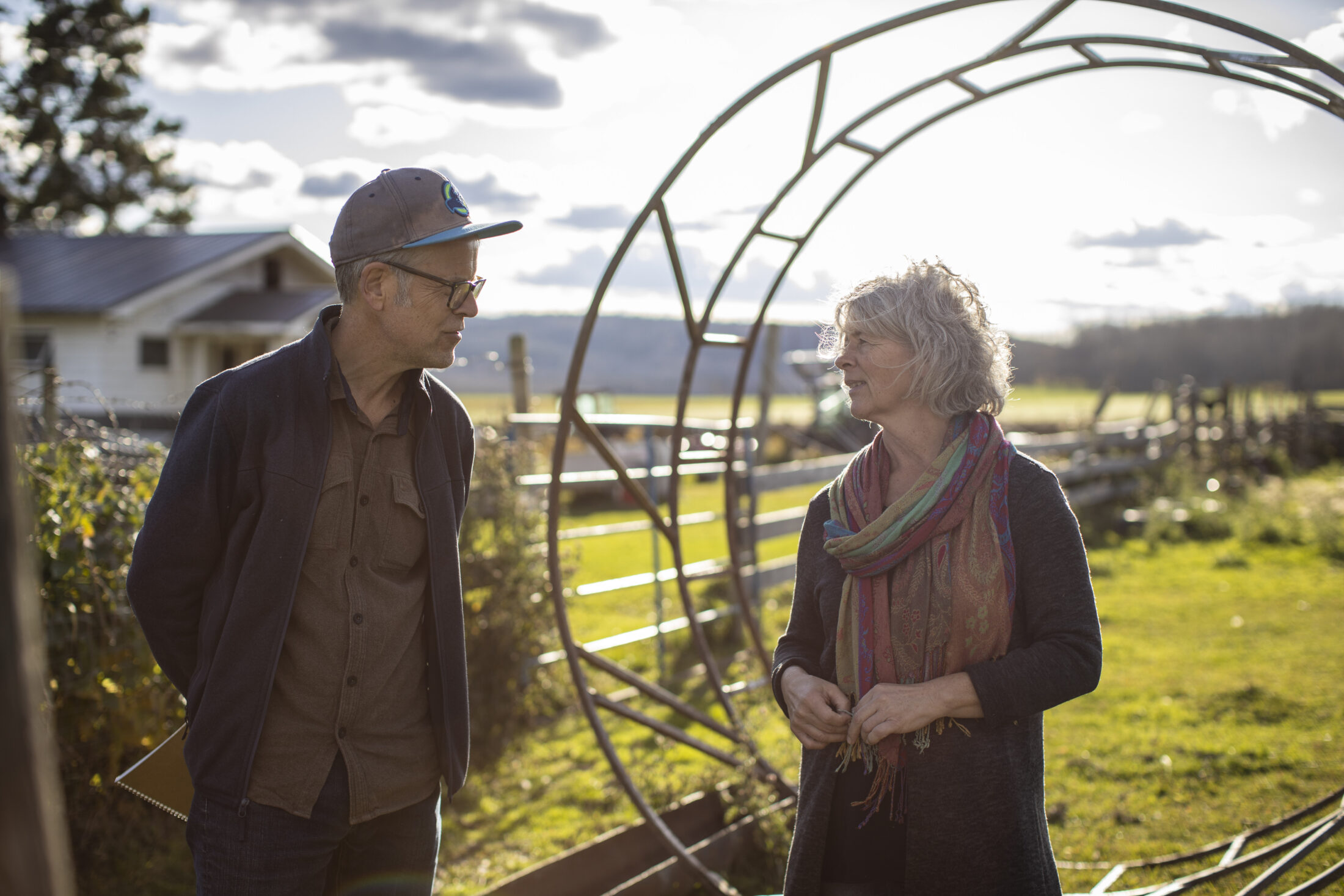
Anja Hutgens gives reporter Ben Parfitt a tour of Penalty Ranch. Photo: Matt Miles / The Narwhal
In an effort to stop this plan from moving forward, Hutgens and Kirschbaum appealed to the quasi-judicial Oil and Gas Appeal Tribunal to rescind the permits. A video hearing was held earlier this month and the couple expects a ruling by the early new year.
In documents filed with the tribunal, Crew Energy said digging the pits will ultimately save it millions of dollars because it will no longer have to truck its wastewater to dispersed C-rings.
But Hutgens and Kirschbaum say the pits pose a danger far greater than the C-rings. They’re bigger and they’re sunk into the earth. If the pits leak — as similar pits have — the highly toxic water will enter the ground deep below the surface, where it can more readily contaminate aquifers that feed springs.
“Our biggest worry is our natural spring, our water situation. If we were to lose that, or it became contaminated, it would simply be devastating to our business. I do not see how we could get over that,” Hutgens says, as a gust of wind whips her thick mop of hair about.
Underscoring her concerns, just a short distance away, one of the couple’s cows tilts its head into a pipe to drink the spring water trickling down to the field from the wooded slope above.
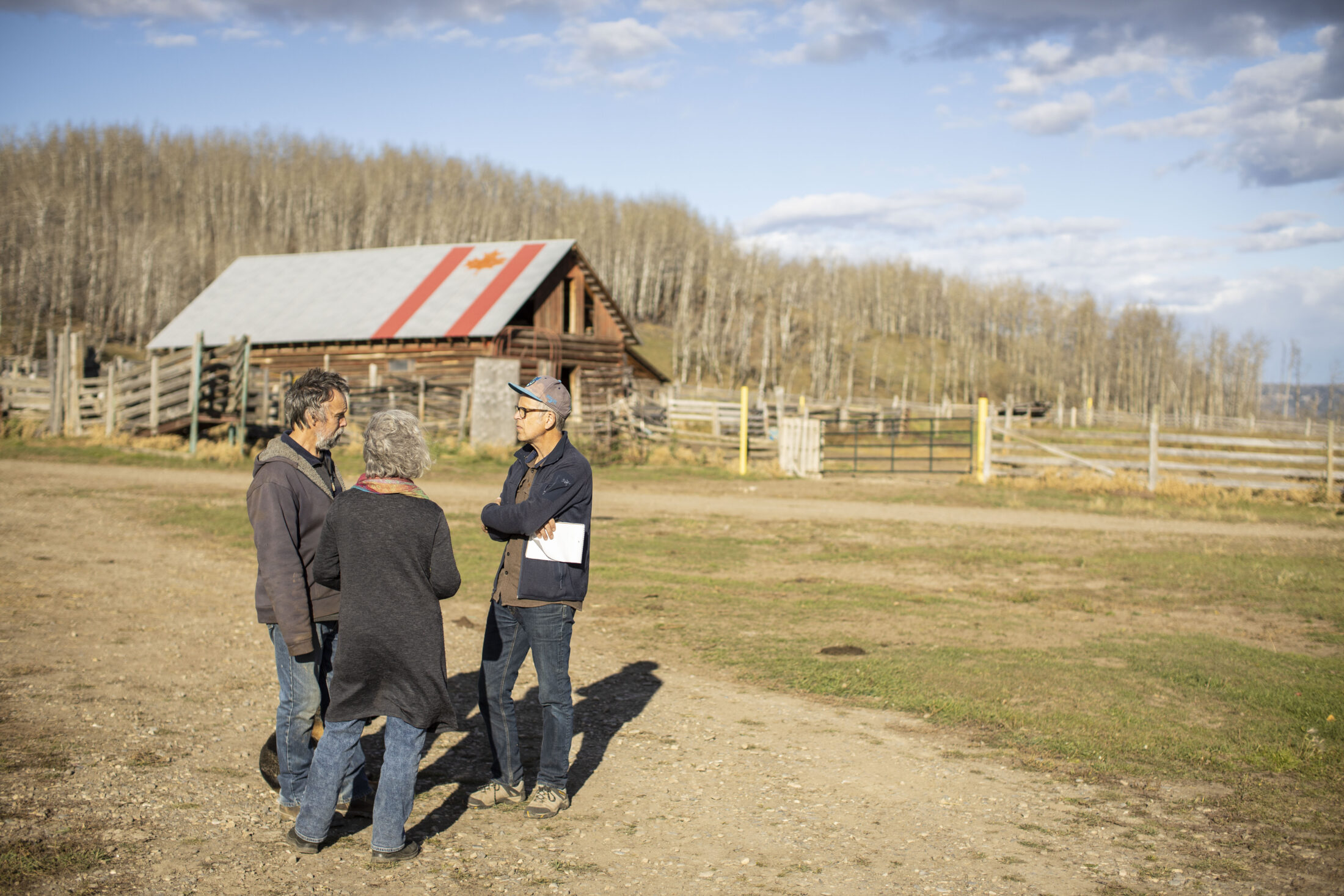
Hans Kirschbaum (left), Anja Hutgens and reporter Ben Parfitt discuss the impacts the natural gas industry is having on agricultural lands. Photo: Matt Miles / The Narwhal
When farming and fossil fuel interests butt heads, oil and gas almost always trumps cattle and crops. And the stakes just keep getting higher. The more wells the industry drills and fracks, the more water it uses. The more water it uses, the more wastewater it generates — waste that is rarely if ever treated because it is so toxic.
Much of natural gas development, as previously reported in The Narwhal, now occurs directly on farms or agricultural leases that farmers hold on Crown or publicly owned lands. Significantly, many of those lands are in B.C.’s Agricultural Land Reserve.
When the reserve was created in 1973, it was hailed as one of the most progressive pieces of farm-protecting legislation in the world. It was designed to bring an end to the steady erosion of farmland in the province, which was then losing about 6,000 to 7,000 hectares each year to other land uses, particularly urban development.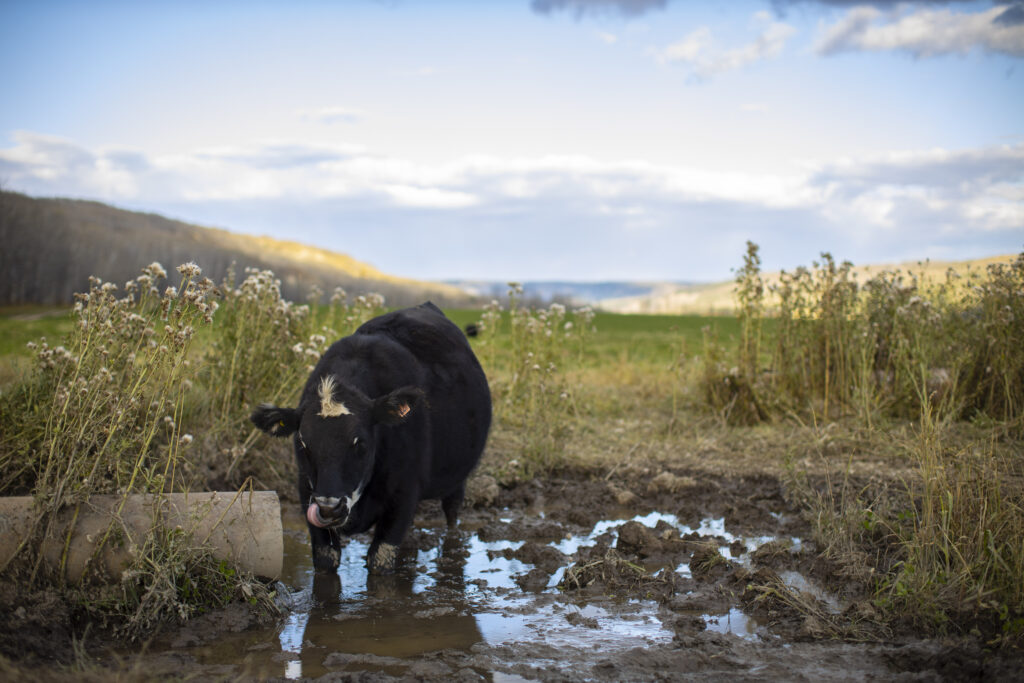
A cow drinks natural spring water at the Penalty Ranch.
The spring lies between the ranch and heavily contaminated wastewater storage sites.
Photo: Matt Miles / The Narwhal
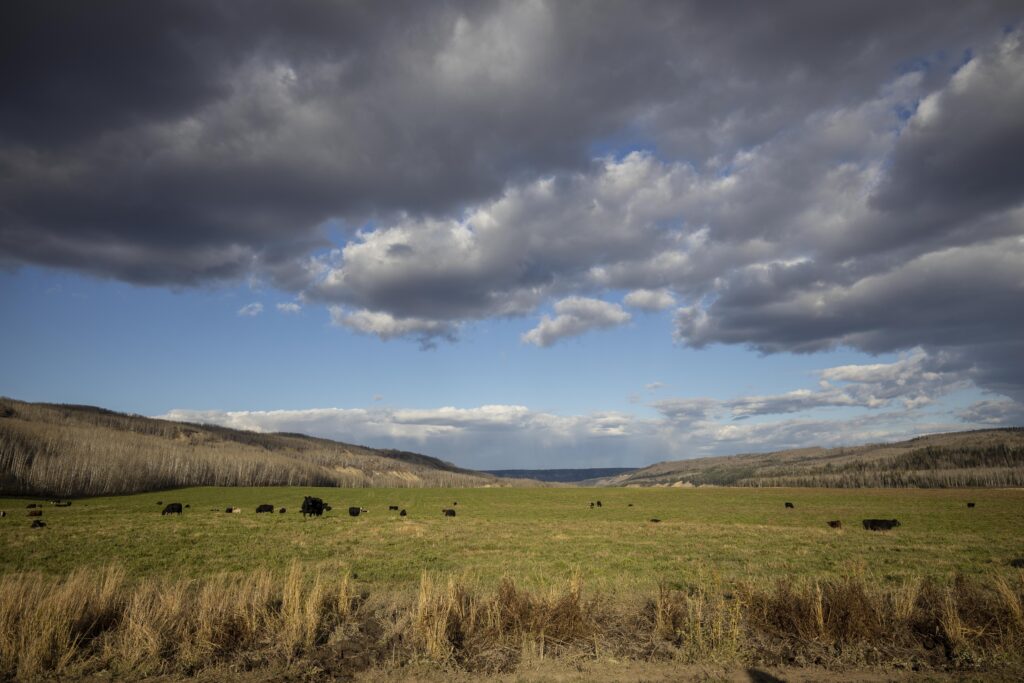
Penalty Ranch is home to 300 head of thirsty cow, which rely on spring water that could be contaminated by encroaching natural gas operations. Photo: Matt Miles / The Narwhal
But despite the reserve, fossil fuel industry development continues to erode the farmland base in the energy-rich northeast corner of the province.
“The development of the energy sector has exceeded the capacity of the current regulatory environment to protect farmland,” concluded a committee appointed by Agriculture Minister Lana Popham to examine threats posed to the reserve.
The committee, chaired by former independent MLA Vicki Huntington, went on to note in its 2018 report that unrelenting energy industry incursions on farmlands in northeast B.C. were making it “increasingly difficult for many farmers and ranches to effectively use their land.”
The committee called on the government to ensure that provincial agencies like the BC Oil and Gas Commission worked more closely with the B.C. Ministry of Agriculture to help the province’s “increasingly besieged agricultural sector.”
Hutgens and Kirschbaum must now wait to see what the tribunal does in response to their pleas, but they know their chances of success are not good.
Penalty Ranch obtained agricultural leases from the B.C. Ministry of Forests decades ago allowing it to graze its cattle on some of the same Crown or publicly owned lands where Crew Energy later set up operations.
In 2016, alarmed by the company’s encroaching operations, Hutgens and Kirschbaum filed an appeal with the tribunal, asking it to rescind Crew Energy’s permits from the BC Oil and Gas Commission allowing it to clear two patches of land in preparation for drilling and fracking five new gas wells.
They lost that appeal but were back before the tribunal again a year later fighting another Crew Energy plan to build three more gas well pads and drill and frack another 22 gas wells. Some of that drilling and fracking would run under Worth Marsh, according to Crew Energy’s diagrams.
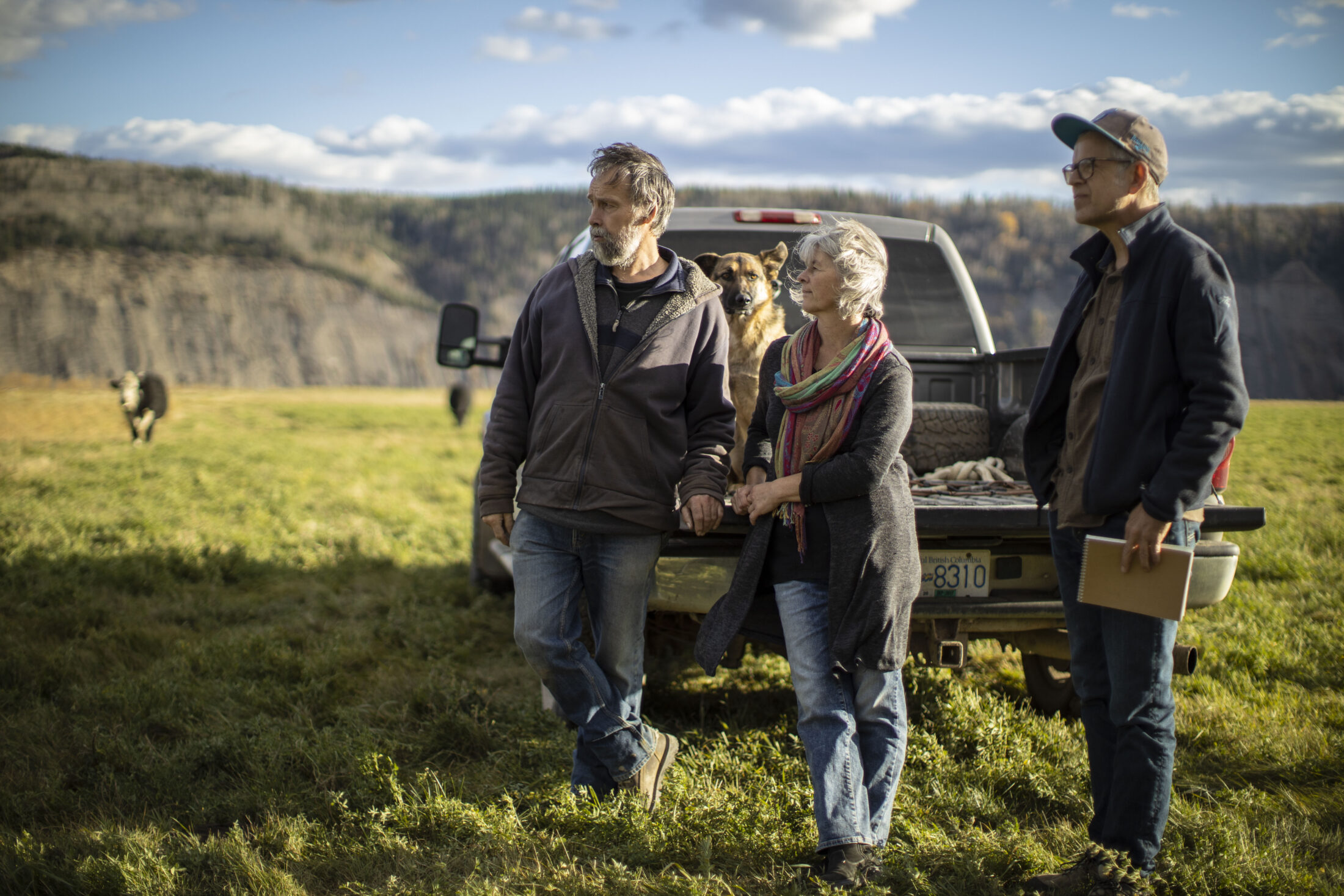
Hans Kirschbaum (left), Anja Hutgens and Ben Parfitt watch the ranchers’ cattle graze on land that could be compromised by nearby industrial development. Photo: Matt Miles / The Narwhal
Hutgens and Kirschbaum were concerned that drilling and fracking could disrupt and contaminate water flows from Worth Marsh — in turn harming their spring.
But the tribunal ultimately dismissed the couple’s appeals because the lands owned outright by Penalty Ranch were not directly impacted by the proposed industrial activities, only its agricultural leases were.
The couple also argued Crew could easily move elsewhere as the company had rights to drill and frack over a wide area of land. Already 10 pipelines, 50 gas wells, 12 C-rings and one large freshwater storage pit was located on lands leased by Penalty Ranch.
But once again, the tribunal was not swayed.
In documents filed with the tribunal, Crew Energy said the toxic water entering the pits following the fracking process will “undergo a filtration and separation process” before being pumped in.
But when The Narwhal emailed Paul Dever, Crew Energy’s vice-president, to ask about the company’s treatment plans, he refused to answer any questions and declined an interview request.
Questions included: where does Crew Energy take radioactive waste for disposal? Where does the company truck any of the muck that accumulates at the bottom of such pits? And what does Crew plan to do should one or both pits fail?
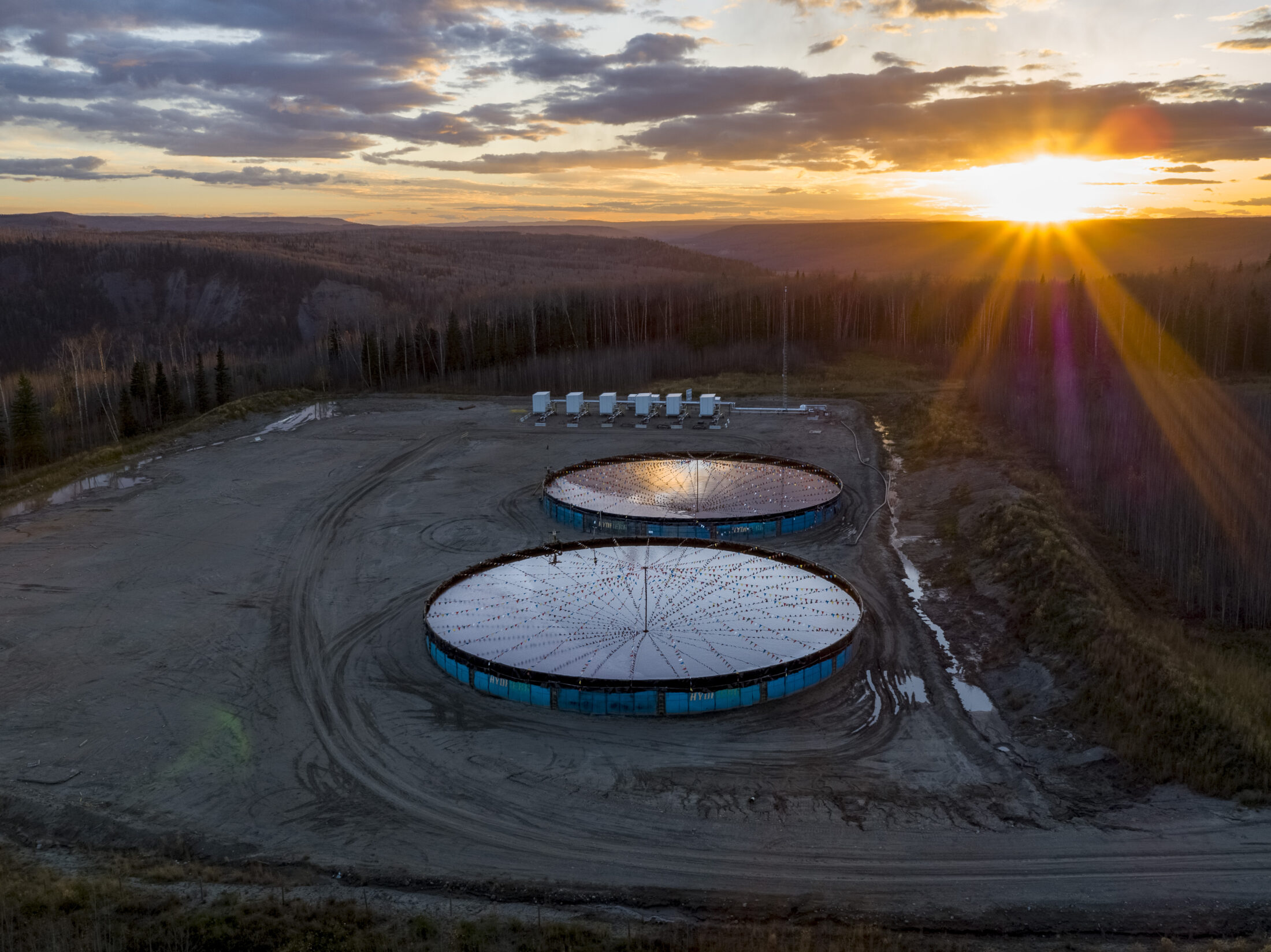
Crew Energy refused to answer questions about how it handles toxic waste in its C-rings and how it will handle such waste from its proposed pits. Photo: Jayce Hawkins / The Narwhal
“Crew Energy Inc. adheres to legislative and regulatory requirements regarding its operations in British Columbia, as regulated by the British Columbia Oil and Gas Commission,” Dever said in a brief email.
Dever did not expand on what those requirements were. But a scientific review of fracking operations released by a panel of experts in June 2019 found that radioactive material can accumulate in tanks and pits at fracking operations and B.C.’s regulations governing potentially radioactive waste in such pits is not as rigorous as it could be.
After reviewing wastewater pits at several fracking operations across B.C., the panel characterized the risk of leaks from containment ponds as “moderate to high.”
Two experts interviewed for the review told the panel’s three scientists that “they were not aware of any studies on NORM in B.C., and that generally there is a lack of water quality data in B.C.,” especially data on NORM concentrations.
The review also found that companies themselves are responsible for identifying radioactive waste in their fracking operations and that there are no wastewater treatment facilities for radioactive water in B.C.
The panel was also told that there are virtually no searchable provincial records detailing where radioactive wastes originating in the province are sent.
Seven years ago, pits very similar to the ones Crew Energy plans to build leaked, resulting in a massive cleanup effort. The failure occurred just north of Beryl Prairie, a farming enclave about a two-hour drive from Penalty Ranch, where Talisman Energy managed four wastewater pits.
The leaks in one pit likely began in January 2013. But it was almost six months before Talisman Energy reported it to the BC Oil and Gas Commission. In the meantime, toxins flowed unchecked from the pit to the earth and groundwater below. Leaks were subsequently discovered at a second pit. As reported in The Narwhal, the contaminants initially discovered at the pit sites included arsenic, barium, cadmium, lithium and lead.
Shortly after the environmental disaster began, Talisman sold its operations in the region to Progress Energy Canada, a subsidiary of the giant state-owned Malaysian corporation, Petronas.
Documents obtained by The Narwhal show the company that coordinated the cleanup, Secure Energy, had the muck at the bottom of the pits tested and the results confirmed the presence of radioactive radium, thorium and uranium at levels that are dangerous to people.
This presented the company with a huge dilemma: how was it to get rid of all that radioactive waste — initially 15,000 cubic metres, or enough to fill six Olympic-sized swimming pools, according to correspondences between Secure Energy and the province.
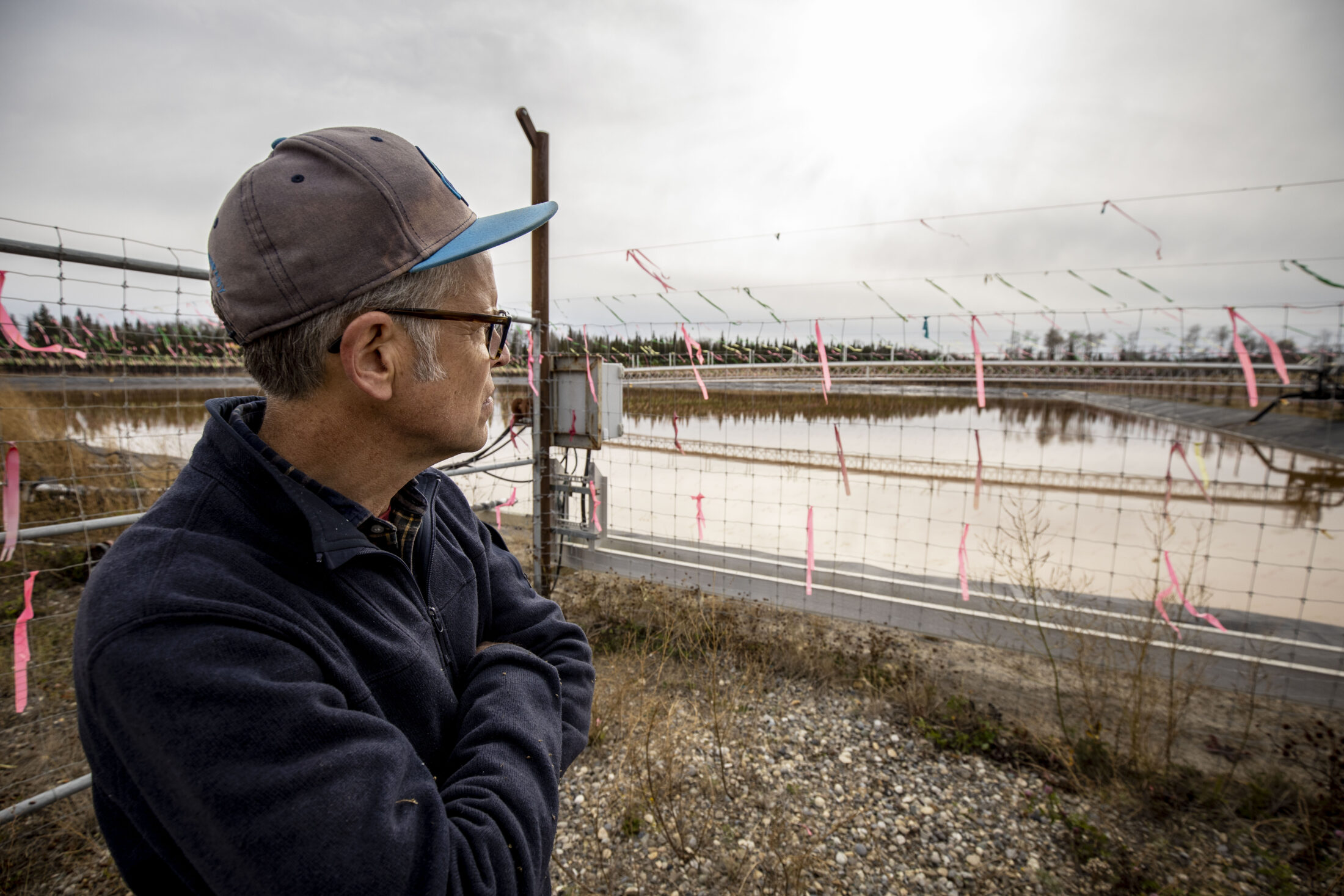
Reporter Ben Parfitt looks onto a wastewater pit owned by Petronas, one of many natural gas companies operating in the Peace River region. Photo: Matt Miles / The Narwhal
Secure Energy tried unsuccessfully to get the Ministry of Environment to allow the muck to be pumped into a hole in the earth at a distant “disposal well” near Fort Nelson, 500 kilometres away from the pits. But disposal wells are designed to take contaminated water, not muck, and certainly not radioactive muck. The ministry declined the application.
Ultimately, Progress Energy paid for the contaminated muck to be trucked across two provincial borders to an underground salt cavern disposal facility near Unity, Sask., owned and operated by Tervita Corporation.
Tervita also owns the sprawling Silverberry Landfill — about a 45-minute drive north of Fort St. John — which received thousands of cubic metres of contaminated soils from the pits.
The Narwhal filed 11 questions with Tervita Corporation, including what fees it charges companies to drop off radioactive wastes, how much waste trucks typically deliver at a time and how waste deliveries and disposals are tracked.
But, like Crew Energy, Tervita declined to directly answer a single question.
“We take pride in responsibly managing all aspects of our business to ensure compliance with relevant environmental and safety legislation, regulations and standards,” Kelly Sansom, Tervita’s communications manager, said in an email.
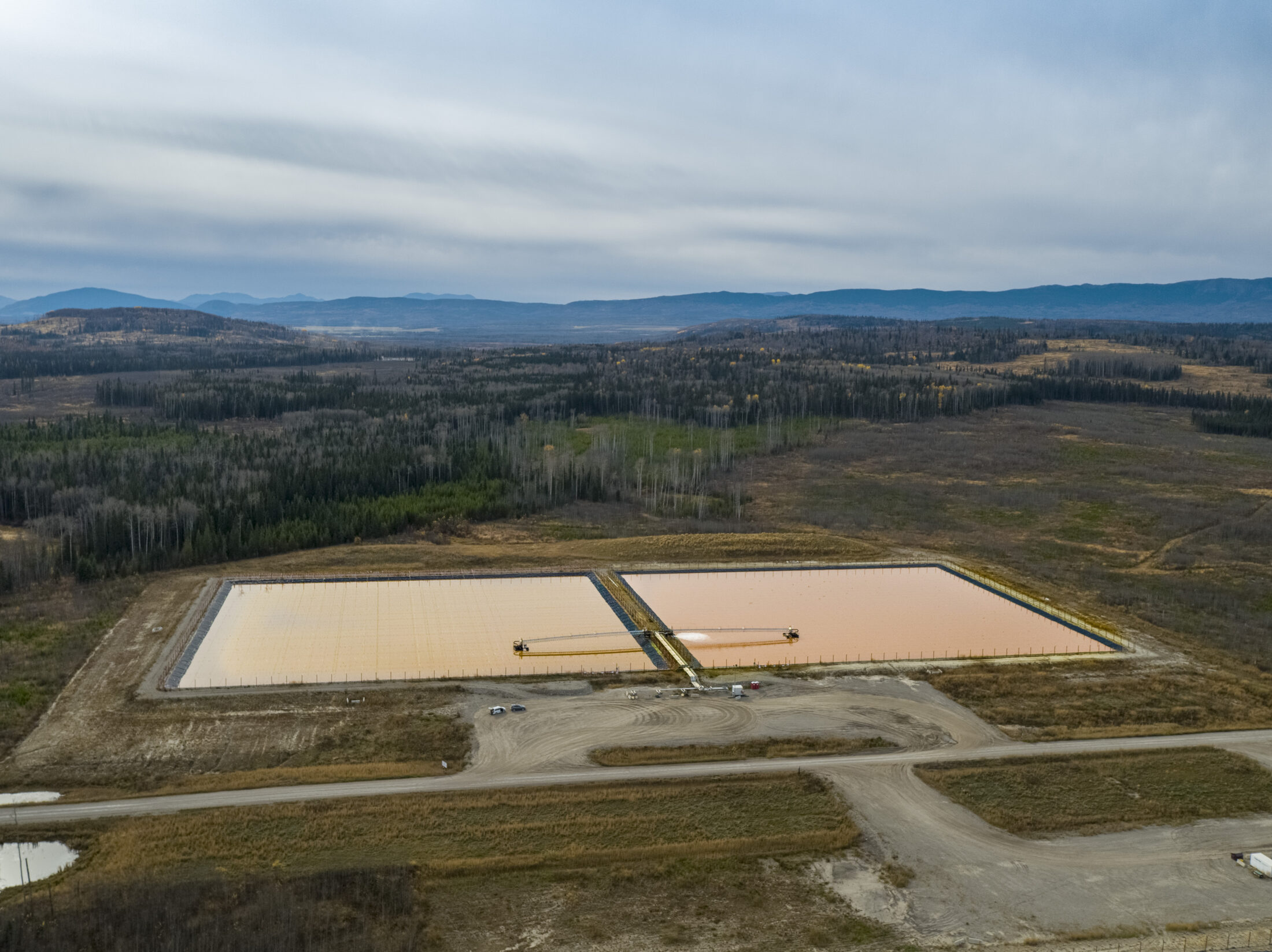
Petronas owns two giant wastewater pits near the rural community of Beryl Prairie. The pits are just down the road from similar pits that failed in 2013, triggering a massive cleanup. Photo: Jayce Hawkins / The Narwhal
The costs to clean up the failed pits has never been disclosed.
But based on a previous report by The Narwhal — which detailed initial cleanup costs at another wastewater pit suspected of leaking and contaminating groundwater and soil — the cost to truck away the wastewater alone would have been in the millions of dollars.
If companies go bankrupt, taxpayers could end up on the hook for covering some or all of the cleanup costs.
And getting rid of the contaminated water would have been only the beginning of a laborious process involving excavating and trucking away contaminated soils, disposing of the pits’ contaminated liners and moving all the radioactive mud far, far away.
Progress Energy has now installed four much larger wastewater pits just four kilometres east of Beryl Prairie, where all signs of the environmental calamity have been wiped away. All that remains there now is a recently graded field, populated with patches of wild grasses and weeds.
The BC Oil and Gas Commission has long known that the shale rock formations natural gas companies typically drill into and frack can be hotspots for radiation.
According to an email obtained by The Narwhal, the commission’s senior petroleum geologist wrote to staff in 2016 to say that some of those formations “would be expected to have NORMs” at concentrations that were “(literally) off the charts.”
Despite this, the commission does not require fracking companies to test for the presence of radioactive materials and there is no requirement for companies that do testing to submit the results to the commission.
Karen Hosford, an environmental consultant who has worked in the mining industry for companies like Teck Resources and who assisted Hutgens and Kirschbaum in preparing their appeal, calls the lack of testing requirements “crazy.”
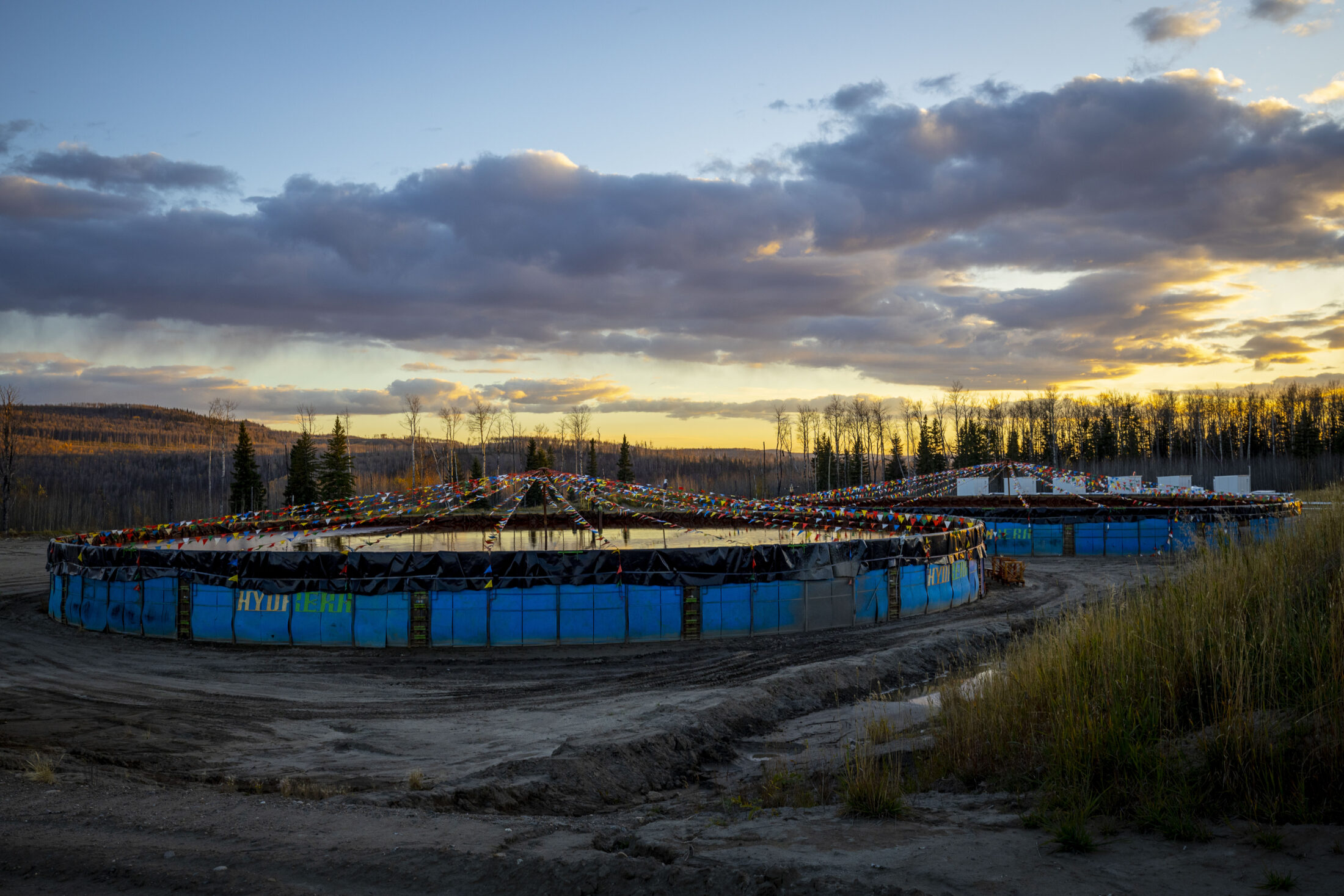
Crew Energy plans to replace several of its C-rings with wastewater pits, which some people say are more likely to cause serious environmental damage if they fail. Photo: Matt Miles / The Narwhal
It was that lack of a commitment that led Hutgens and Kirschbaum to ask Crew Energy if they could collect their own samples for analysis. But the company denied the request, Hosford said.
“Basically, there’s no onus on the company to do anything. They hide behind the regulator, and the regulator protects them,” Hosford told The Narwhal.
If the wastewater pits are dug near Penalty Ranch, both Crew Energy and the commission say there will be additional safeguards in place to prevent leaks. Instead of only two liners in the pits — as was the case at the environmental disaster at Beryl Prairie — there will be three.
But that’s cold comfort to Hutgens and Kirschbaum. If two liners can fail, so can three.
When Kirschbaum’s father, Karl, bought Penalty Ranch, he learned the previous owner had picked the name in honour of a tradition at the ranch. If a ranch hand did something dumb like failing to latch a gate, they had to hoe a garden or muck out a horse stall as a penalty at the end of the day.
Kirschbaum doesn’t want the pits. But if they do go in, he says Crew Energy should pay a penalty of sorts if things go wrong.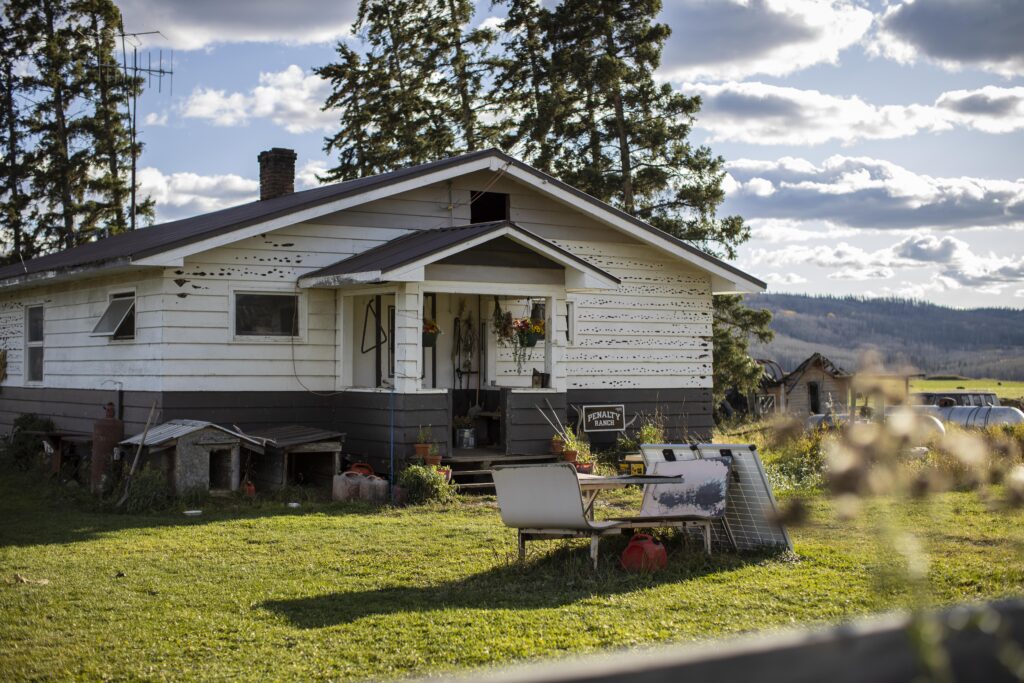
Penalty Ranch’s name was inspired by a tradition at the site: if you make a mistake, you pay for it. Hans Kirschbaum would like natural gas companies to follow that same rule. Photo: Matt Miles / The Narwhal
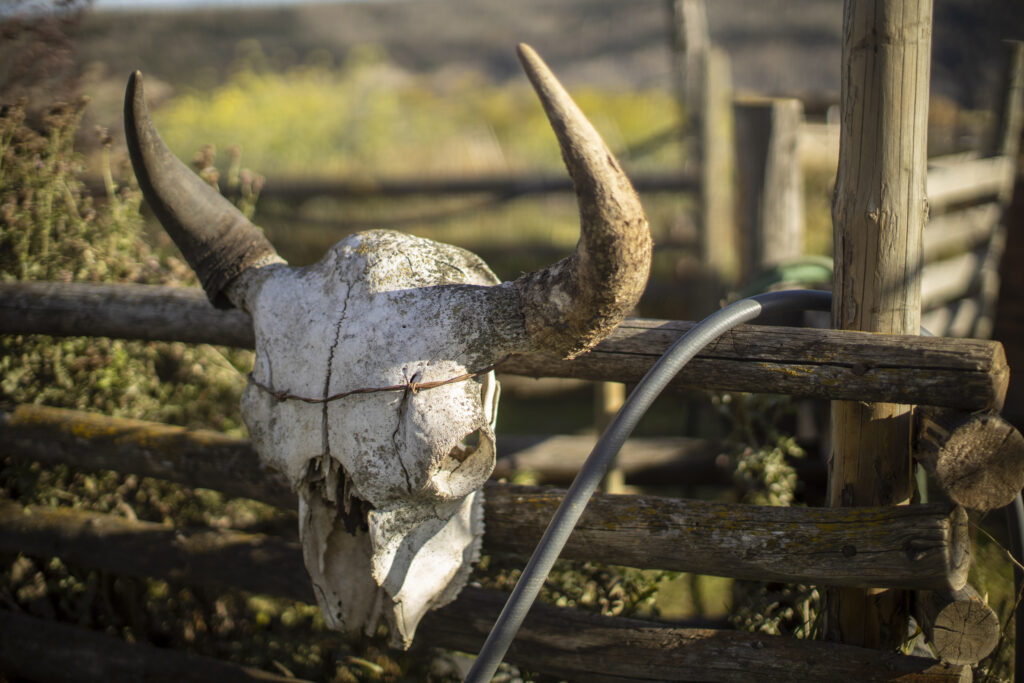
Ranchers have raised cattle at Penalty Ranch for decades. Encroaching natural gas operations put that tradition at risk. Photo: Matt Miles / The Narwhal
If the first and second liners in the pits start to leak, Kirschbaum thinks the company should have to immediately absorb the costs associated with swiftly draining all of the water and muck out of the pits before the third layer and last line of defence fails as well. “The pit should be emptied and liner one and liner two fixed,” Kirschbaum says.
Hutgens agrees. As dusk approaches and she and Kirschbaum prepare to leave Crew’s C-rings behind, it doesn’t take a Geiger counter to see that whether the fracking industry’s wastewater is stored in a pit dug into the earth or in tanks above ground, it is dangerous stuff.
“We love living in such a beautiful place,” Hutgens says. “But it’s heartbreaking to see how our once so quiet and natural ranch is turning into an industrial site. There has to be a bit more of a balance.”
And with that, she and Kirschbaum get back in their pickup truck and head home.
[Top photo: Hans Kirschbaum (left), reporter Ben Parfitt and Anja Hutgens look at a pool filled with fracking wastewater at the top of the hill above the ranchers' property. The couple is worried encroaching natural gas operations will contaminate their water source. Photo: Matt Miles / The Narwhal]